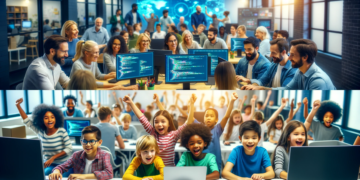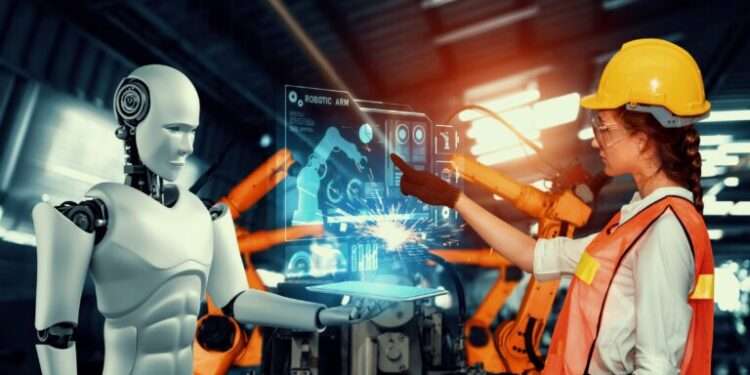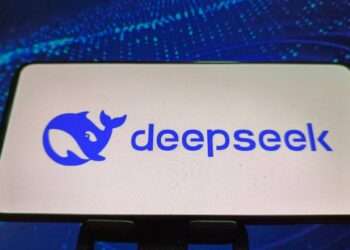As we stand on the brink of a technological revolution, artificial intelligence (AI) promises unprecedented advancements. However, beneath the surface of innovation lies a darker narrative, one that significantly impacts the job market. Recent discussions, such as those in Forbes, highlight the nuanced challenges of AI, revealing a side that’s often overshadowed by its potential (Unveiling The Dark Side Of Artificial Intelligence In The Job Market). From job displacement to unequal impacts across industries, the ethical and psychological implications of AI are profound and multifaceted.
The term ‘AI exposure’ has emerged as a buzzword, a softer way to discuss the harsh realities of job losses due to AI integration (AI exposure: Softening talk about job losses). Yet, the numbers speak loudly, with thousands of roles eliminated as AI becomes more prevalent in the workplace (AI eliminated nearly 4,000 jobs in May). Despite the concern, it’s essential to understand the full scope of AI’s impact, including the potential for enhancing job quality and creating new opportunities. As we delve deeper into this complex issue, we invite you to join us in exploring the multifaceted effects of AI in the job market, shedding light on the darker side of technological progress
Introduction to the Paradox of Progress

The Lure of Innovation vs. the Reality of Displacement
The advent of artificial intelligence (AI) is often hailed as a beacon of innovation, driving efficiencies and creating new opportunities. However, the reality of job displacement cannot be ignored. As Forbes reports, the introduction of AI into various sectors has led to a significant shift in the job market, with roles being redefined or eliminated. The contrast between the lure of technological advancement and the harsh reality of job loss creates a paradox that is increasingly difficult to navigate.
Overview of AI’s Impact on Various Industries
The impact of AI is not uniform; it varies greatly across different industries. According to a detailed analysis by the Pew Research Center, about a fifth of all workers are in high-exposure jobs to AI, with significant variations based on gender, ethnicity, education, and income levels. Industries such as manufacturing, logistics, and customer service have seen a considerable overhaul in job structure due to AI, whereas others are only beginning to feel the impact.
Dissecting the Impact: From Job Displacement to Industry Transformation
As we delve deeper into the influence of AI, it becomes crucial to dissect its impact, not just on individual jobs but on entire industries. This section aims to uncover the extent of job displacement while also considering how AI is transforming industries in ways that could lead to unforeseen opportunities.

The Statistics Behind AI-Induced Job Losses
The numbers provide a stark reality check. A report from CBS News indicates that AI eliminated nearly 4,000 jobs in a single month, underscoring the rapid pace at which technology is reshaping the workforce. These statistics reflect a growing trend where routine and repetitive tasks are increasingly automated, leaving a significant number of individuals facing uncertainty about their job security.
Artificial Intelligence and the Unequal Impact Across Different Sectors
The impact of AI is not felt equally across all sectors. Some industries face more significant upheaval than others. According to insights from the Washington Post, sectors such as healthcare, education, and creative fields might experience a different kind of transformation, where AI acts as a tool for enhancement rather than replacement. In contrast, industries like manufacturing and data entry are seeing a more immediate and drastic change due to AI. This uneven impact raises important questions about the future of work and the necessity of industry-specific strategies to adapt to these changes.
Ethical Dilemmas and the Human Cost
The integration of AI into the job market isn’t just a matter of economics and efficiency; it’s also a profound ethical issue that touches on the very essence of human value and dignity. This section delves into the psychological impact on workers and the broader ethical considerations, exploring the complex interplay between technological progress and human welfare.

The Psychological Toll on Workers
The introduction of AI into the workplace isn’t merely a logistical change; it’s a change that deeply affects the psychological well-being of workers. The uncertainty and fear of job loss can lead to significant stress and anxiety. As highlighted by CBS News, the abrupt displacement due to AI can leave many feeling undervalued and insecure about their future, impacting not just their economic status but also their mental health.
Ethical Considerations and Bias in AI Deployment
Beyond the immediate impact on workers, there are broader ethical questions to consider. Issues of bias and fairness come to the forefront, especially as AI systems are designed and trained based on existing data that might carry inherent biases. Reports from Forbes discuss how without careful consideration and ethical guidelines, AI can perpetuate or even exacerbate inequalities in the workplace, affecting decisions related to hiring, promotions, and terminations. Addressing these ethical dilemmas is crucial to ensuring that AI is deployed in a way that upholds human dignity and fairness.
The Buzzword Decoded: What Does ‘Artificial Intelligence Exposure’ Really Mean?
The term ‘AI exposure’ has recently entered the lexicon, serving as a euphemism for the potential job losses and changes due to AI. This section aims to decode this buzzword, shedding light on what it truly signifies for the workforce and the broader implications for the job market.

Softening the Blow: Rhetoric vs. Reality
The phrase ‘AI exposure’ is often used to soften the harsh reality of AI-induced job displacement. As reported by CNBC, this term is becoming a new way to discuss the impact of AI on jobs, perhaps making it more palatable for public and corporate discourse. However, it’s vital to understand what lies behind this rhetoric: real people with real concerns about their livelihoods and futures. This subsection aims to dissect the language used and confront the reality it attempts to mask.
Understanding the Long-Term Implications of ‘AI Exposure’
Beyond the immediate job losses, ‘AI exposure’ hints at a broader range of long-term implications for the workforce. As industries adapt to AI, workers are not just losing jobs but are also facing the need to reskill and adapt to a changing job landscape. Insights from Pew Research Center show how different demographics are affected in varied ways, indicating that ‘AI exposure’ has complex, layered implications that extend beyond the immediate risk of job loss. This subsection explores these long-term effects, offering a more comprehensive view of how Artificial Intelligence is reshaping the nature of work and employment.
The Realities of AI in the Workplace: A Closer Look
Moving beyond the rhetoric and statistics, it’s crucial to examine the on-the-ground realities of AI in the workplace. This section aims to provide a closer look at how AI is being implemented, the changing nature of jobs, and the varied perceptions of AI’s role in the job market. Understanding these aspects helps paint a more detailed picture of the current state and future trajectory of AI in employment.
AI Implementation and the Changing Nature of Jobs
AI’s role in the workplace goes beyond mere job replacement; it’s also about job transformation. Industries are witnessing a shift where AI doesn’t just take over tasks but also creates new types of jobs and alters existing ones. For instance, Techopedia discusses how certain sectors might see a significant shift in the skills required and job descriptions, as AI integration demands a workforce that can collaborate with and oversee AI systems. This subsection will explore how AI is reshaping the very nature of work, highlighting both the challenges and opportunities this presents.
Perceptions vs. Reality: The Diverse Views on AI’s Role
Perceptions of AI’s impact on jobs vary widely among different stakeholders, from employees and employers to policymakers and the general public. While some view AI as a threat to job security, others see it as a tool for enhancing productivity and creating new opportunities. The Washington Post offers insights into the complex and often conflicting views on AI in the workplace. This subsection aims to delve into these diverse perspectives, comparing them with the actual on-the-ground impact AI is having, to provide a balanced and comprehensive understanding of AI’s role in the job market.

The Broader Picture: AI’s Impact on the Global Job Market
While the effects of AI on individual industries and workers are profound, it’s equally important to zoom out and consider the global implications. AI is not just a local or national phenomenon but one that affects the entire global job market. This section aims to provide a comprehensive view of how AI is reshaping employment worldwide, considering various case studies, reports, and strategies being employed across different countries and industries.
Case Studies and Reports: A Global Overview
To understand the global impact of AI, it’s helpful to look at specific case studies and reports from around the world. Sources like the New York Times provide in-depth analyses of how Artificial Intelligence is affecting jobs in different regions, from advanced economies to developing countries. This subsection will present a selection of these case studies and reports, offering a broad perspective on how various countries and sectors are experiencing and responding to the challenges and opportunities presented by AI.
Preparing for the Future: Strategies and Solutions
As the world grapples with the implications of Artificial Intelligence for employment, various strategies and solutions are being proposed and implemented to mitigate negative impacts and harness the potential benefits. This might include re-skilling programs, policy interventions, and industry-wide collaborations. Insights from sources like Harvard Business Review shed light on some of these strategies, highlighting innovative approaches and best practices being adopted globally. This subsection will explore these strategies, discussing how different stakeholders are preparing for a future where AI plays an increasingly significant role in the job market.
Conclusion: Embracing Change with Caution
As we conclude our exploration of the dark side of artificial intelligence in the job market, it’s clear that while Artificial Intelligence brings incredible potential for innovation and efficiency, it also poses significant challenges and ethical dilemmas. The journey through understanding AI’s impact, from job displacement to ethical considerations, underscores the need for a balanced approach that embraces the benefits while mitigating the risks. The future of work in the age of AI isn’t predetermined; it’s a path that requires careful navigation, considering the well-being of the workforce and the ethical implications of rapid technological advancement.
In navigating these waters, knowledge and preparation are key. Staying informed about the latest developments and engaging in discussions about the future of AI and employment can empower individuals and organizations to make more informed decisions and adapt more effectively to the changing landscape.

Consider reading best of our articles:
For those in search of deeper insights and broader perspectives, you’re in the right place. Explore our curated list of must-read articles:
- The Sunlit Path: Can Solar Energy Replace Fossil Fuels?
- The Future of Virtual Reality and the Role of the Metaverse
- The Economic Powerhouse in Your Pocket: How Smartphones Fuel the Economy
- The Curse of Talent: Why Artists Often Grapple with Depression
Dive into these topics and more to stay informed, enlightened, and entertained. As we continue to witness the evolution of AI and its impact on various facets of life, let’s engage with the material, discuss, and learn together. The path ahead is one of discovery and adaptation, and through understanding, we can navigate it more wisely and humanely.










































